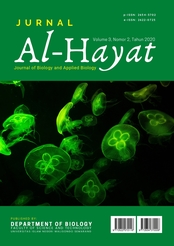Simple Feasibility Analysis Of Nitrogen-Fixing Cereals Project
Main Article Content
Abstract
Nitrogen does not directly have advantages in human physiology system, but it holds one of the most critical roles in plants’ life cycle and productivity. Even though Nitrogen is the most abundant elements in the atmosphere, it is also the most deficient essential nutrients in plants. The proposed idea of the nitrogen-fixing GM crops, particularly wheat, is aimed to overcome those stated cons of the traditional diculture and nitrogen fertilizer. This analysis focus on the overview as well as the pro and cons of the genetically modified nitrogen-fixing plants in providing a better agricultural method. The genetically modifying method to generate a nitrogen-fixing non-legumes carries a significant chance of failure results and hindrance. The multilevel implication occurs when we need to modify the plants that not normally produce nodules in their roots to form the nodules and to modify the Nitrogen-fixing microbes to live in the nodules of non-legumes, which are not their natural dwelling places.
In conclusion, the genetically modified crops project to fix their Nitrogen is feasible, but the difficulties and the funds needed still outweigh the benefits obtained in the future. With all of those limitations, the target goal to erase famine in 2050 just by funding the nitrogen-fixing wheat alone seems to be too high to be reached. The funds and efforts should be better spent on other factors and farming methods.
Downloads
Article Details
The copyright of the received article shall be assigned to the journal as the publisher of the journal. The intended copyright includes the right to publish the article in various forms (including reprints). The journal maintains the publishing rights to the published articles. Authors are allowed to use their articles for any legal purposes deemed necessary without written permission from the journal with an acknowledgment of initial publication to this journal.
The work under license Creative Commons Attribution-ShareAlike 4.0 International License.
References
GM Freeze. (2012). GM Nitrogen Fixing Cereals : No silver bullet. Retrieved November 20, 2019, from https://www.gmfreeze.org/wp-content/uploads/2016/09/N_fixing_cereals_final.pdf
Saikia, S.P., Jain, V. (2007). Biological nitorgen fixation with non legumes: An achievable target or a dogma?. Current Science. 92 (3), p317-322.
Swain, H., Abhijita, S. (2013). Nitrogen fixation and its improvement through genetic engineering. Journal of Global Biosciences. 2 (5), p98-112.
Todar, K. Todar, K. (2012). The Impact of Microbes on the Environment and Human Activities. Retrieved November 20, 2019, from Online Textbook on Bacteriology website: http://textbookofbacteriology.net/Impact_3.html
Untergasser, A., Bijl, G., Liu, W., Bisseling, T., Schaart, G., Geurts, R.. (2012). One-step Agrobacterium mediated transformation of eight genes essential for Rhizobium symbiotic signaling using the novel binary vector system pHUGE. PLOS ONE. 7 (10), p1-11.

